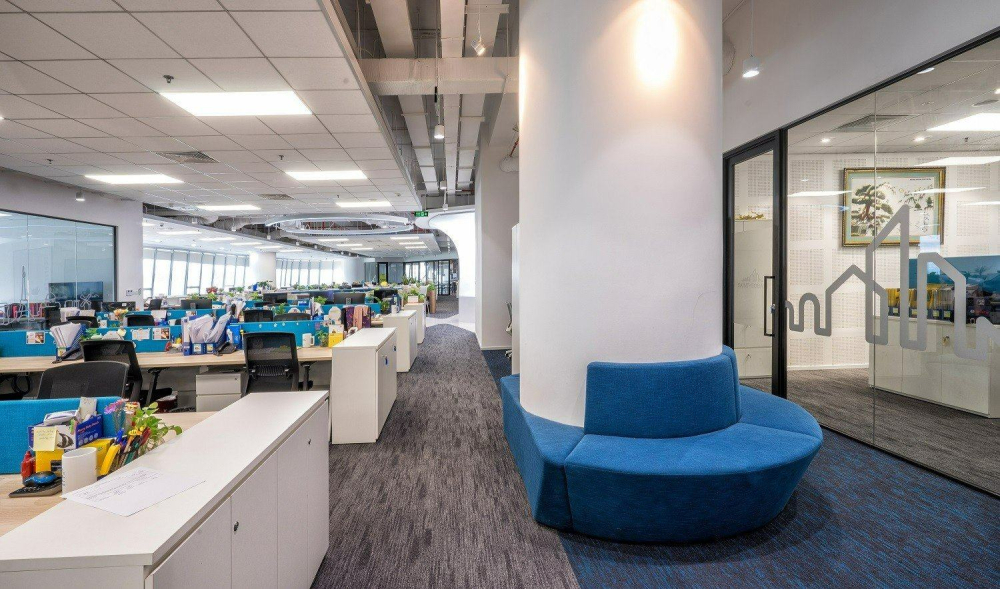SAINT-GOBAIN SHAPES GREEN MATERIALS
The construction materials industry has long been criticized for causing heavy environmental pollution. According to the United Nations environmental program report, the construction sector in general is responsible for nearly 40% of CO2 emissions, and accounts for 36% of total global energy consumption. The material production process requires large amounts of energy, exploits and uses many natural resources, including stone, sand, wood and water, which not only affects the environment but also degrades natural ecosystems.
The importance of reducing negative impacts on the environment is increasingly putting great pressure on businesses, requiring changes in production methods with specific measures. Technological innovation and the use of recycled materials are among the preferred approaches. Manufacturers seek to optimize production processes to reduce emissions and waste, while developing green construction, promoting the use of green materials as a notable trend.
As the leading corporation in the lightweight construction materials market with important products such as gypsum panels and fiber cement, Saint-Gobain Vietnam is also aiming to both maintain growth and reduce negative impacts. in the course of business. Responding to Forbes Vietnam about the direction of sustainable development, Mr. Nguyen Truong Hai, general director of Saint-Gobain Vietnam, said: “Consuming a lot, producing a lot leads to a lot of emissions, Saint-Gobain strives to reduce the impact negative by reducing energy, raw material consumption and reusing materials. At the same time, maximize positive impacts by providing high-quality products and innovative solutions.”

Mr. Nguyen Truong Hai, CEO of Saint-Gobain Vietnam, shared that the group provides high-quality, advanced material solutions to reduce emissions and contribute to creating Green buildings.
Headquartered in Courbevoie, France, Saint-Gobain has a history of more than 350 years, and is one of the world’s leading enterprises in the field of construction materials. Since 1990, the group has been present in Vietnam, making an important contribution to the development and improvement of the quality of the domestic construction materials industry according to global standards.
According to CEO Nguyen Truong Hai, Saint-Gobain Vietnam is the largest materials company in the Vietnamese market, market share varies by product category but is still leading in most main business segments. Including the brands Vinh Tuong-gyproc gypsum board, Weber waterproofing adhesive, DURAflex fiber cement board, ISOVER insulation… These brands were acquired by the group during the development process, and are puzzle pieces surrounding the brand’s philosophy of new and more sustainable features.
Saint-Gobain Vietnam uses the office itself as a visual demonstration for new construction material solutions. In more than 1,800m2 of headquarters’ courtyard at 10 Mai Chi Tho (District 2), common meeting rooms are designed according to each material solution and named according to the senses. The rooms showcase thermal insulation solutions, soundproof ceilings and walls, plaster walls, and reduced thermal conductivity on surfaces. The design takes advantage of door frames to enhance natural light, both enhancing aesthetics and minimizing energy waste. “New lightweight, convenient materials help shorten construction costs, using less virgin materials means more sustainability and lower emissions,” Mr. Hai explained.

Saint-Gobain office uses a variety of material solutions that the group is providing to create a multi-convenience working space for company members.
The company’s Door-to-Door (D2D) model focuses on building a supply chain that optimizes transportation routes for customers to reduce carbon emissions. This door-to-door delivery idea comes from observing customer behavior in Vietnam, regularly picking up short-term goods needs by private vehicle. Saint-Gobain conducted measurements and found that most of the vehicles were old and often not loaded enough, both wasteful and causing great pollution. They negotiate to receive direct delivery by large vehicles, standard in size, designed to suit many types of products, combined with multiple delivery points. Thanks to that, more than 2,000 tons of CO2 have been cut in the period from 2021 to May 2023 through D2D activities.
Mr. Hai further explained: “Such solutions help optimize volume and size on each shipment, reducing emissions throughout the supply chain, not just at the manufacturing plant. Only then can the entire operating cycle be synchronized.”
In the production process, Saint-Gobain complies with the global group’s common sustainability goals, such as reducing CO2 with a commitment to carbon neutrality by 2050, and reducing clean water consumption by 50% by 2030. Saint-Gobain Vietnam also adheres to the operating method, while creating positive impacts and minimizing negative impacts, with a roadmap for each specific stage, closely monitored each year. “Everything must be transparent, there can be no joking around,” Mr. Hai said.
In 2023, Saint-Gobain Vietnam plans to cut more than 4,300 tons of CO2, but has completed the goal early by reducing nearly 4,200 tons of CO2 by the end of May. This result comes from ongoing green production standards such as using renewable energy, biomass boilers, saving electricity, and reusing all industrial wastewater from gypsum factories.
At fiber cement toothpick factories, in 2023, it is expected that 11,000m3 of wastewater will be reused and brought back to the production line. Each subsequent year, these factories will reuse at least 7,000m3 of water, towards a dual commitment: 50% reduction in clean water use, 100% reuse of industrial wastewater by 2030 according to the parent corporation. ,
In parallel, there is an effort to cut about 30% of virgin materials in the production process, using the method of recycling materials instead of burying them as before. The goal is to use 30% recycled materials in products by 2023. The company’s actual monitoring results show that the recovery and reuse of pallets, pads, baseboards, and scrap gypsum panels is reaching 40-60% of the annual target depending on each item.












